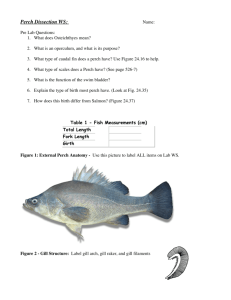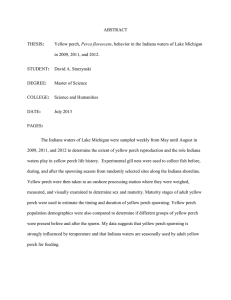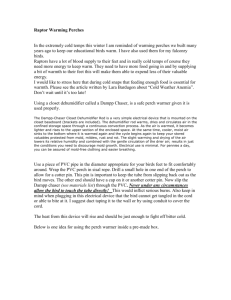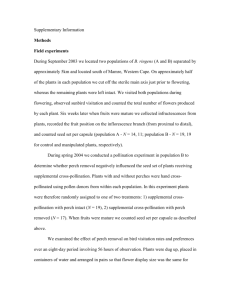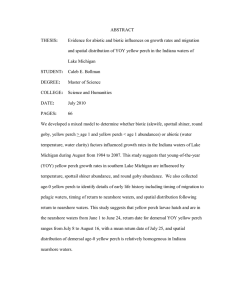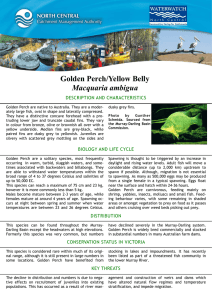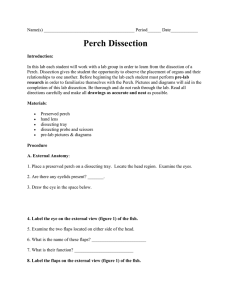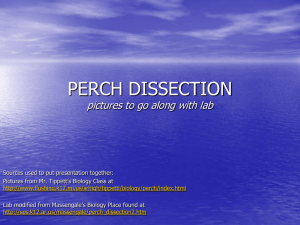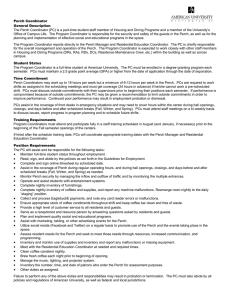Eurasian perch (Perca fluviatilis) have different phenotypes
advertisement
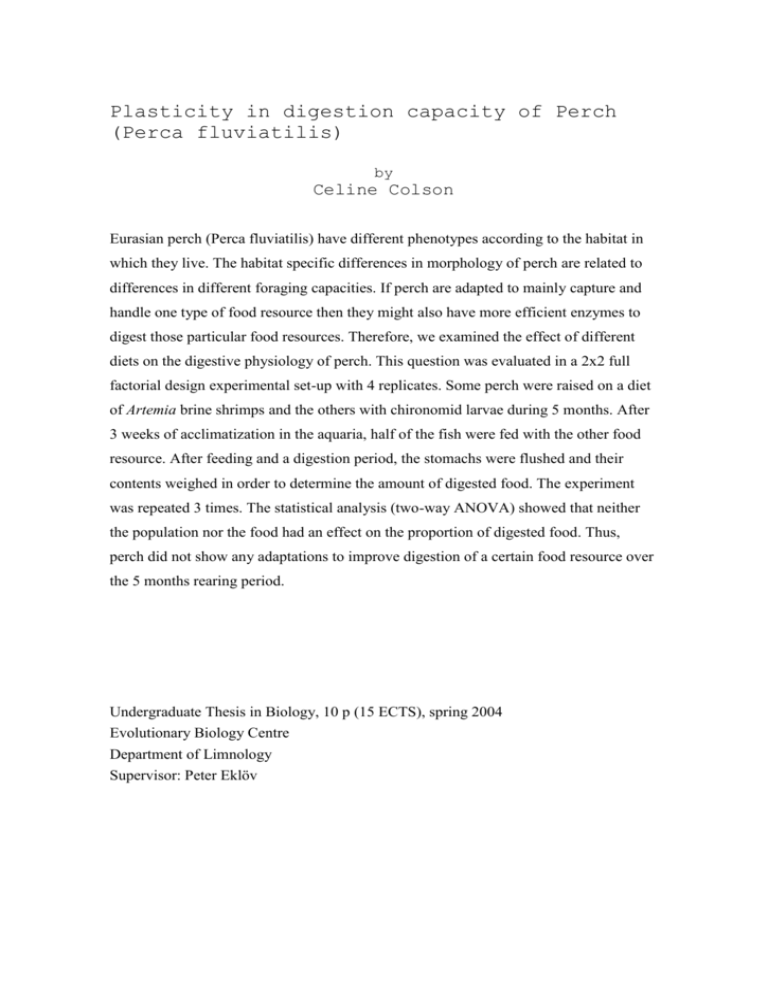
Plasticity in digestion capacity of Perch (Perca fluviatilis) by Celine Colson Eurasian perch (Perca fluviatilis) have different phenotypes according to the habitat in which they live. The habitat specific differences in morphology of perch are related to differences in different foraging capacities. If perch are adapted to mainly capture and handle one type of food resource then they might also have more efficient enzymes to digest those particular food resources. Therefore, we examined the effect of different diets on the digestive physiology of perch. This question was evaluated in a 2x2 full factorial design experimental set-up with 4 replicates. Some perch were raised on a diet of Artemia brine shrimps and the others with chironomid larvae during 5 months. After 3 weeks of acclimatization in the aquaria, half of the fish were fed with the other food resource. After feeding and a digestion period, the stomachs were flushed and their contents weighed in order to determine the amount of digested food. The experiment was repeated 3 times. The statistical analysis (two-way ANOVA) showed that neither the population nor the food had an effect on the proportion of digested food. Thus, perch did not show any adaptations to improve digestion of a certain food resource over the 5 months rearing period. Undergraduate Thesis in Biology, 10 p (15 ECTS), spring 2004 Evolutionary Biology Centre Department of Limnology Supervisor: Peter Eklöv
